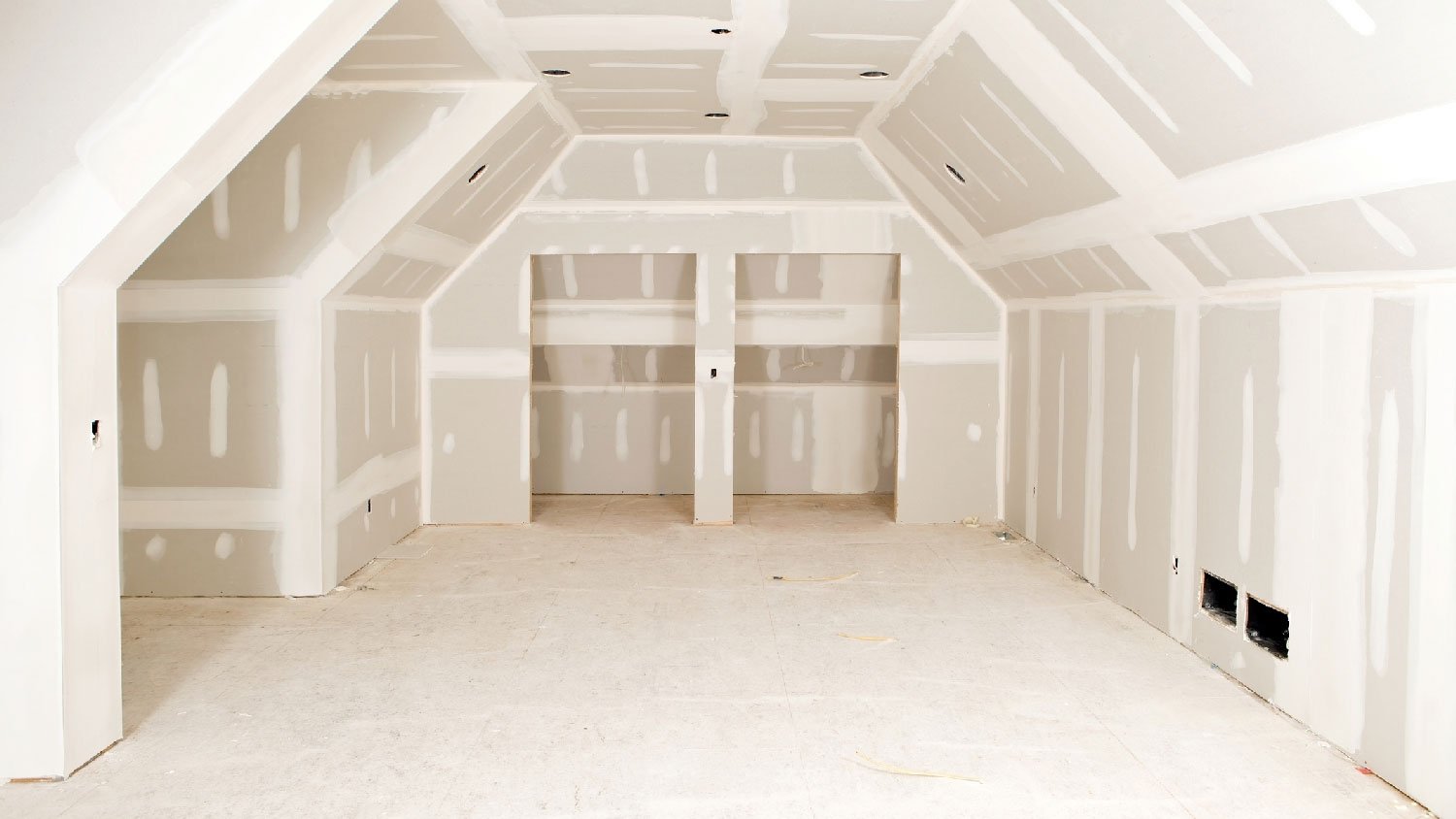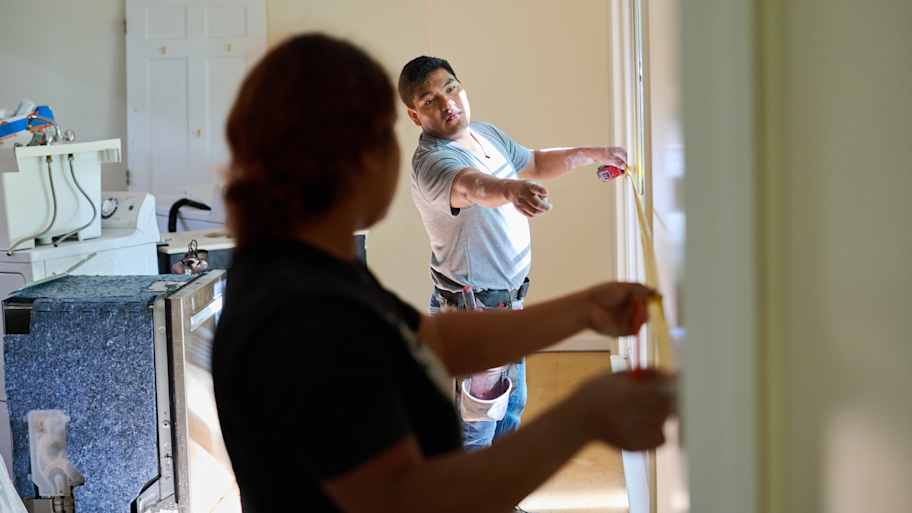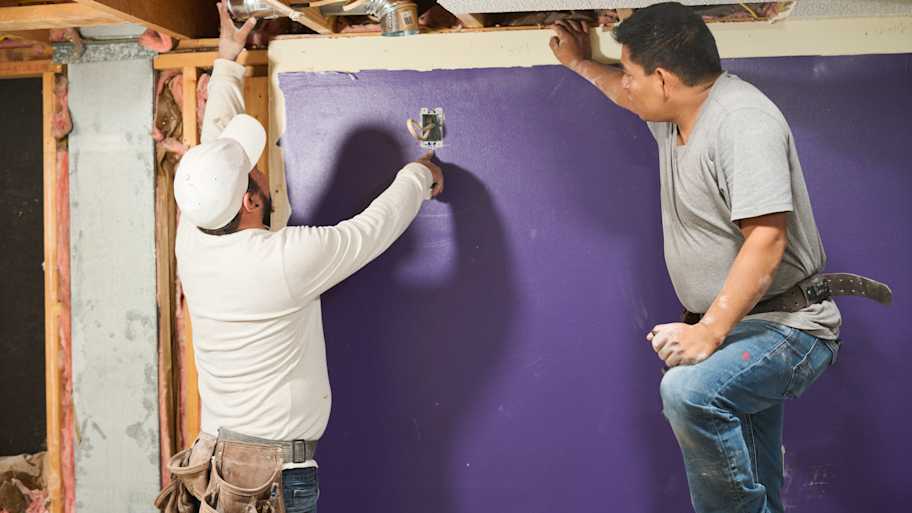How Many Screws Should You Use per Sheet of Drywall?
If you don’t use the right number of screws, hanging drywall gets a little screwy


You’ll need about one screw for every square foot of drywall.
The standard 4-by-8-foot sheet of drywall needs 32 screws.
Space screws anywhere from 8 to 16 inches apart, depending on the location.
A standard drywall sheet covers around 32 square feet.
How many screws should you use per sheet of drywall? If you’re diving into a drywall project, you won't just need the right number of screws—you’ll also have to space them correctly. This figure can vary based on the layout of your studs and the thickness of the drywall, but it doesn’t deviate much for most residential settings. To get the right number of screws for your drywall project, you just need to follow a little math in the guide below.
Number of Screws to Use per Sheet of Drywall
Most residential projects use 4-by-8-foot drywall sheets that are 1/2-inch thick and require around 32 screws. Here are some common sizes of drywall sheets and the approximate number of screws you’ll need:
4-by-8-foot drywall sheet: 32 screws
4-by-12-foot drywall sheet: 48 screws
4-by-16-foot drywall sheet: 64 screws
Keep in mind that even if you glue down drywall, you’ll still need to use drywall screws or nails to secure it to the wall. Since local building codes dictate screw patterns, make sure you check yours before starting your project. A drywall installer will have the experience and knowledge of which screws to use.
Calculating the Total Number of Screws Required

Though you can estimate the number of screws you’ll need by purchasing one screw per square foot of drywall, there is a more accurate measure. This is particularly helpful if you’re using half sheets, large sheets, or making cutouts for windows and doors.
As mentioned above, a 4-by-8 sheet of drywall covers about 32 square feet, and you can’t purchase partial sheets. To get the total number of screws required, you’ll need to:
Calculate the total square footage of your wall
Divide the square footage by 32 to get the number of full sheets required
Multiply the number of sheets required by 32 to get the number of screws required
Keep in mind, larger sheets cover more area and require more screws. When in doubt, round up. Having more material is always better than running out midway through a job.
How to Space Screws in Drywall
Drywall installation requires a specific technique—from using the right size drywall screws to taping the seams so they lay flush with the rest of the wall. If you don’t have experience hanging drywall, you may want to call a drywall installer near you to take on the project. If you do have experience, you’ll need to master the art of drywall spacing.

Drywall screw spacing depends on where you hang the drywall and which part of the sheet you’re screwing down. Place the screws too far apart, and the seams will be difficult to smooth. Place the screws too close, and the drywall will crumble.
As a rule, place screws closer to the edges of the drywall sheet (the edges are the rows of screws along any outer edge of your drywall sheet) and allow for more room between screws in the field (the middle portion of your drywall sheet).
| Area of the Drywall Sheet | Ideal Distance Between Screws (Inches) |
|---|---|
| Wall edges | 8 |
| Wall field | 16 |
| Ceiling edges | 7–8 |
| Ceiling field | 12 |
Wall Edges
Space screws on the edges about 8 inches apart. This helps create a continuous seam rather than a noticeable lip that can lead to uneven taping. The placement is also closer along the edges than in the field because the edges need extra security.
Whether you hang drywall vertically or horizontally depends on building codes and your wall height. Either way, make sure you keep your screw placement consistent.
Wall Fields
Space the screws in the field (the center of the drywall sheet) about 16 inches apart. This is the maximum spacing recommended by the International Residential Code (IRC) for 1/2-inch-thick drywall.
In most modern homes, this placement works well because studs are spaced 16 inches apart. In older homes, that figure can vary. Either way, the distance between studs is rarely larger than 24 inches. It’s a good idea to check the local building codes, just in case.
Crystalline silica is a toxic dust that's often generated during drywall installation, which can cause respiratory issues if exposed over time. A professional drywall installation company has the right tools to protect your home and ensure safe air quality after your project is completed.
Ceiling Edges
If you’re hanging drywall on your ceiling, consider a slightly closer screw placement along the edges of each sheet. The variation in spacing for ceiling drywall accounts for the extra stress it experiences—blame it on gravity.
Many professionals who install drywall recommend placing your screws 7 inches apart along the edges of a ceiling panel. That said, you can also choose to go with the standard 8 inches apart as long as the building code allows.
Ceiling Fields
Place screws 12 inches apart in the field (or center) of drywall ceiling panels. Again, this figure is the maximum space recommended by the IRC. Improper placement can lead to cracks and screw pops (when screws loosen and pop out of the drywall), so make sure to consult a drywall installation pro if you have any questions.
















